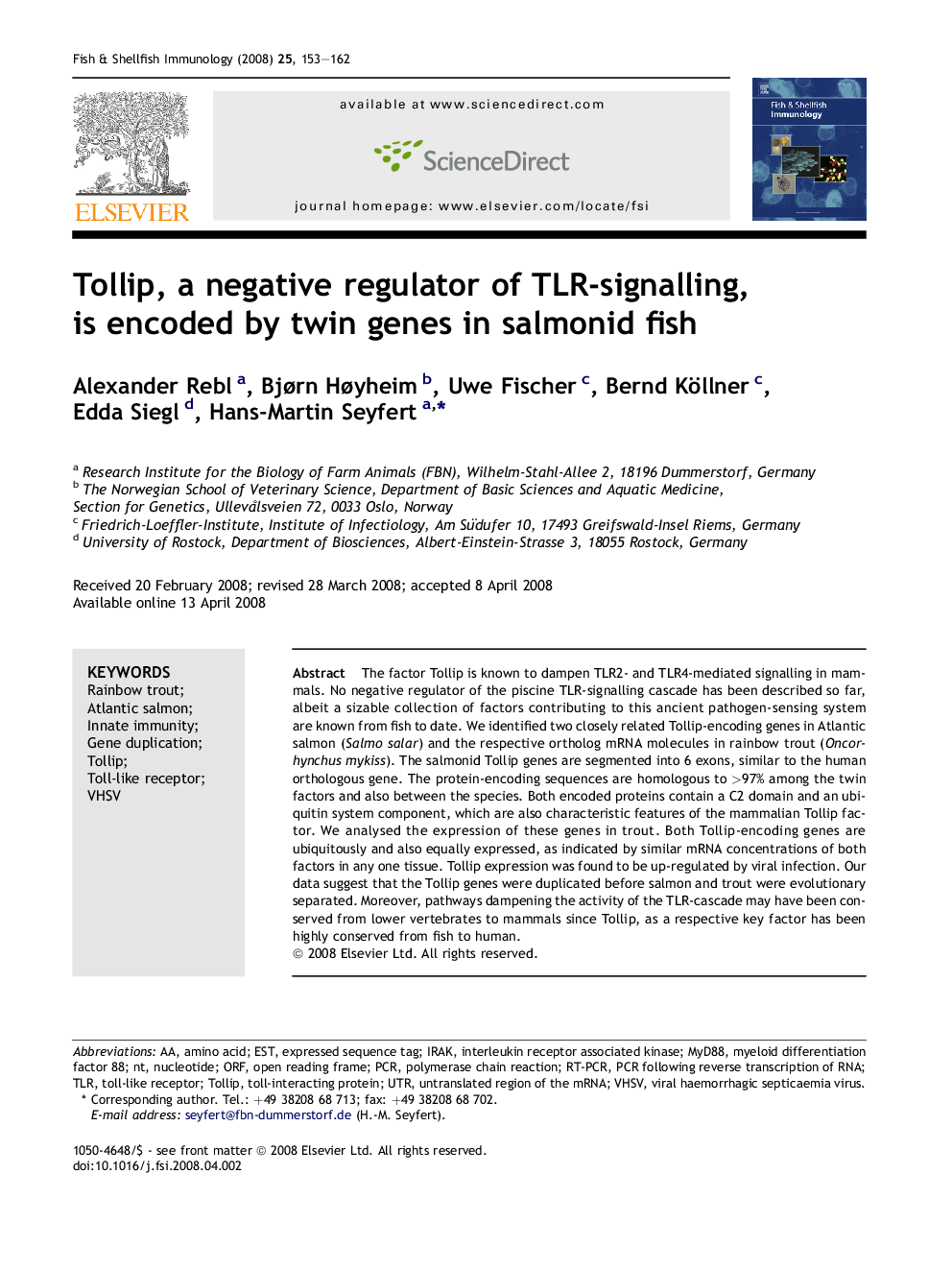| Article ID | Journal | Published Year | Pages | File Type |
|---|---|---|---|---|
| 2433146 | Fish & Shellfish Immunology | 2008 | 10 Pages |
The factor Tollip is known to dampen TLR2- and TLR4-mediated signalling in mammals. No negative regulator of the piscine TLR-signalling cascade has been described so far, albeit a sizable collection of factors contributing to this ancient pathogen-sensing system are known from fish to date. We identified two closely related Tollip-encoding genes in Atlantic salmon (Salmo salar) and the respective ortholog mRNA molecules in rainbow trout (Oncorhynchus mykiss). The salmonid Tollip genes are segmented into 6 exons, similar to the human orthologous gene. The protein-encoding sequences are homologous to >97% among the twin factors and also between the species. Both encoded proteins contain a C2 domain and an ubiquitin system component, which are also characteristic features of the mammalian Tollip factor. We analysed the expression of these genes in trout. Both Tollip-encoding genes are ubiquitously and also equally expressed, as indicated by similar mRNA concentrations of both factors in any one tissue. Tollip expression was found to be up-regulated by viral infection. Our data suggest that the Tollip genes were duplicated before salmon and trout were evolutionary separated. Moreover, pathways dampening the activity of the TLR-cascade may have been conserved from lower vertebrates to mammals since Tollip, as a respective key factor has been highly conserved from fish to human.
